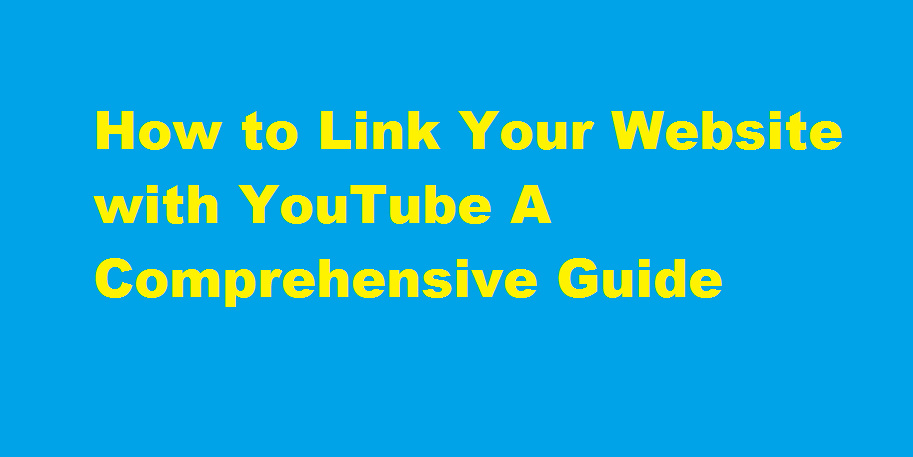How to Link Your Website with YouTube A Comprehensive Guide
4 min read
Introduction
In today’s digital age, integrating various online platforms is crucial for effective marketing and enhancing brand visibility. Connecting your website with YouTube can significantly amplify your online presence and engage a broader audience. This article will provide a step-by-step guide on how to seamlessly link your website to YouTube, allowing you to leverage the power of video content and drive traffic to your site.
Create a YouTube Channel
The first step towards linking your website to YouTube is creating a YouTube channel. If you don’t have one already, go to YouTube and sign in with your Google account. Once logged in, navigate to the YouTube Studio and click on “Create a channel.” Follow the on-screen instructions to set up your channel, customize its appearance, and optimize it to align with your website’s branding.
Customize Your Channel
To establish a cohesive online presence, it is essential to customize your YouTube channel to align with your website’s visual identity. Add your logo, choose a channel art banner, and select colors that reflect your brand. Consistency across platforms helps viewers recognize your brand and fosters trust and credibility.
Add Your Website URL
To drive traffic from YouTube to your website, you need to add your website URL to your channel. In the YouTube Studio, go to the “Customization” tab, and under the “Basic Info” section, you’ll find the option to enter your website’s URL. Ensure the URL is accurate and complete. This link will be displayed prominently on your channel’s banner and in the About section.
Optimize Video Descriptions
When uploading videos to your YouTube channel, make sure to optimize their descriptions. Include relevant keywords, a brief summary of the video content, and a call-to-action (CTA) encouraging viewers to visit your website for more information. Provide a direct link to your website within the video description to make it easily accessible to interested viewers.
Use Cards and End Screens
YouTube offers interactive features such as cards and end screens, which can be used to drive traffic to your website. Cards are small pop-ups that appear during the video and can be linked to external websites. End screens, on the other hand, appear in the last few seconds of the video and can include clickable elements directing viewers to your website. Utilize these features strategically to engage viewers and encourage them to explore your website further.
Cross-Promote Content
To maximize the integration between your website and YouTube, cross-promote your content across platforms. Embed your YouTube videos on relevant pages of your website. Additionally, create blog posts or articles that expand on the video content and embed the YouTube video within the article. This approach not only provides additional value to your website visitors but also enhances your video’s reach and engagement.
Leverage YouTube Analytics
YouTube Analytics provides valuable insights into your video performance, audience demographics, and traffic sources. Monitor the analytics regularly to understand which videos are driving the most traffic to your website. This data can help you refine your content strategy, optimize your website for increased conversions, and identify opportunities for growth.
FREQUENTLY ASKED QUESTIONS:
How can I change my custom URL?
In order to change your custom URL, you have to remove your existing URL and claim a new one. This deactivates the URL so that it no longer directs viewers to your channel.
How to change or add a channel to a Brand Account?
When a channel is linked to a Brand Account, multiple people can manage it from their Google Accounts. If you already have a YouTube channel, you can associate it with a specific Brand Account.
Conclusion
Linking your website with YouTube is a powerful way to increase brand visibility, engage a wider audience, and drive traffic to your site. By following the steps outlined in this guide, you can seamlessly integrate your website with YouTube and leverage the full potential of video marketing. Remember to customize your channel, optimize video descriptions, use interactive features, cross-promote your content, and monitor YouTube Analytics to continually refine your approach. By establishing a strong connection between your website and YouTube, you’ll unlock new opportunities for growth and success in the digital landscape.
Read Also : A Comprehensive Guide on Publishing Your Book





